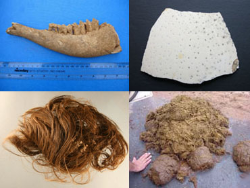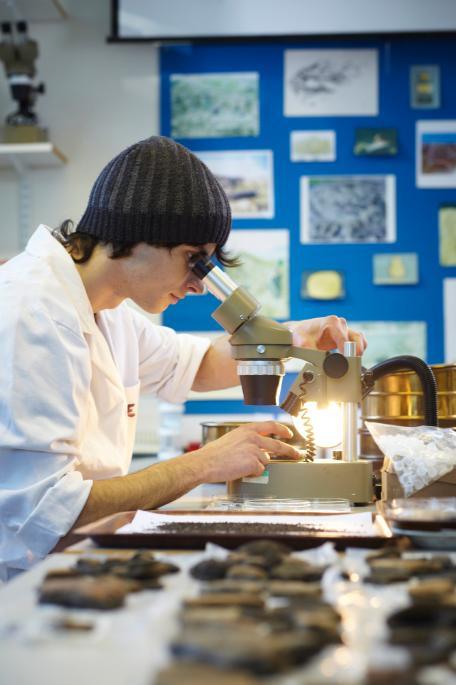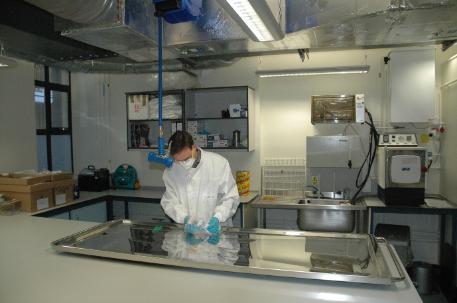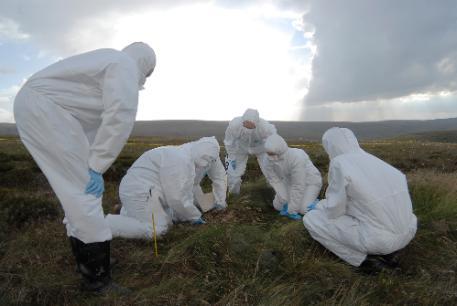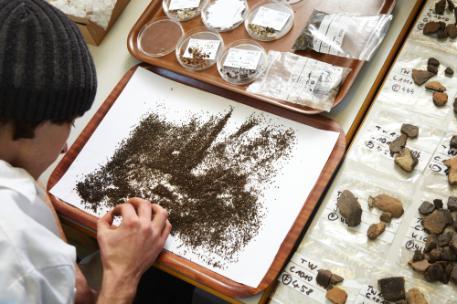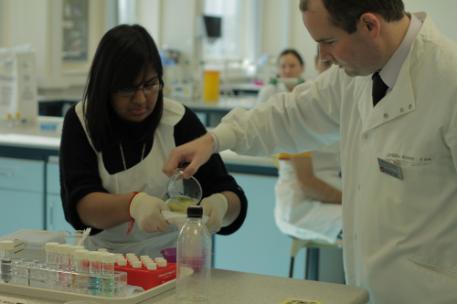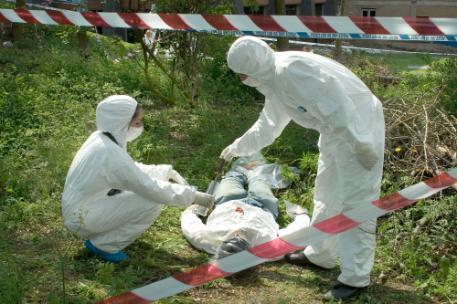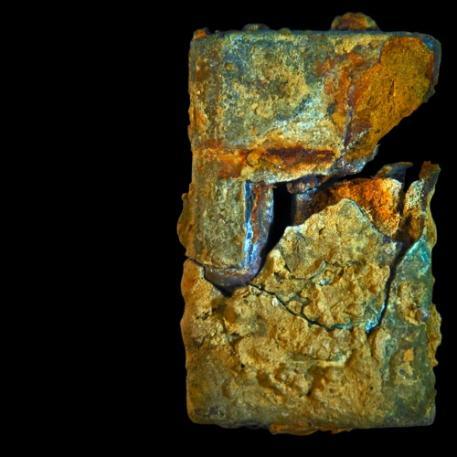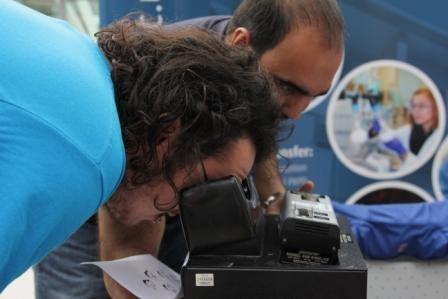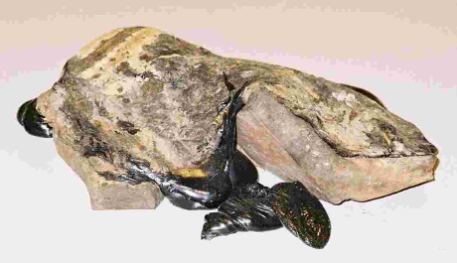Facilities
Biological Anthropology Research Centre
The Environmental Archaeology room with the allied wet lab and microscope laboratories, provide facilities for staff and students at Bradford to study how past communities have interacted with their local environments, by analysing animal and plant remains from archaeological excavations. Our labs are equipped for recovering and processing environmental samples by flotation, for pollen and phytolith extraction and for the analysis of plant remains (waterlogged wood, charcoals, cereals, seeds, ash, fibres, pollen and phytoliths). Our reference collections of wood, seeds, pollen and herbarium sheets span our research areas of Britain, the Mediterranean and Southeast Asia, and our comparative faunal collection focuses on skeletal material from Northwest Europe and molluscs from the Mediterranean.
The Biological Anthropology Research Centre (BARC) is part of the School of Archaeological and Forensic Sciences, University of Bradford. The centre specialises in the analysis of human skeletal remains, both ancient and modern. All members of staff are active academic researchers and the centre also undertakes a wide range of contract work on behalf of various archaeological units, museums, and other organisations.
Environmental archaeology laboratory
The Environmental Archaeology room with the allied wet lab and microscope laboratories, provide facilities for staff and students at Bradford to study how past communities have interacted with their local environments, by analysing animal and plant remains from archaeological excavations. Our labs are equipped for recovering and processing environmental samples by flotation, for pollen and phytolith extraction and for the analysis of plant remains (waterlogged wood, charcoals, cereals, seeds, ash, fibres, pollen and phytoliths). Our reference collections of wood, seeds, pollen and herbarium sheets span our research areas of Britain, the Mediterranean and Southeast Asia, and our comparative faunal collection focuses on skeletal material from Northwest Europe and molluscs from the Mediterranean.
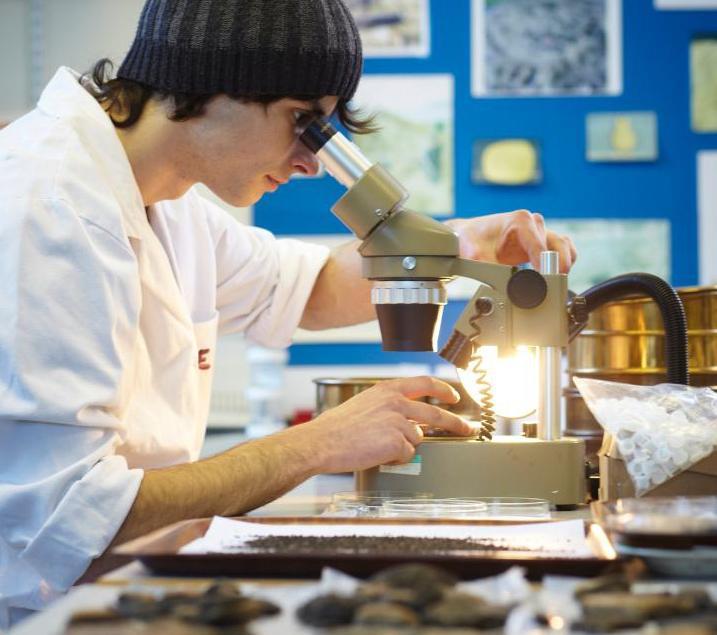
Archaeological Conservation Laboratory and object X-radiography
Our artefacts conservation laboratory is equipped for the investigation and cleaning of archaeological small finds including metals, stone, animal hard tissues, textiles and leather.
Work usually starts with photographic recording and X-radiography using one of the two Industrial X-ray units housed in the School.
Mechanical cleaning of metal artefacts involves the combination of hand-tools used under low power light microscope through to the use of an air-abrasive unit. This erodes soft corrosion deposits in a controlled manner using abrasive particles in a jet of compressed air.
A speciality of this laboratory is the conservation and analysis of material recovered during the archaeological investigations of modern conflicts; especially World War 2 battlefield artefacts
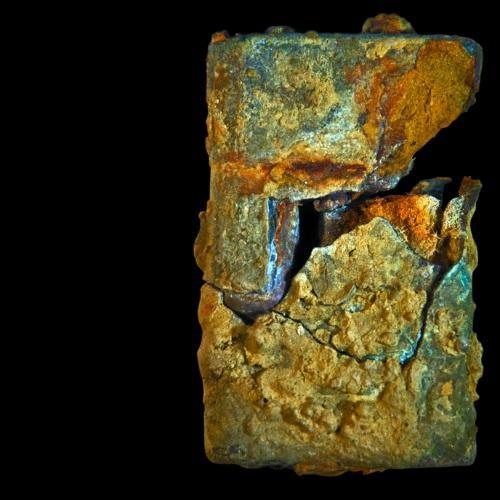
Corroded WW1 Cigarette Lighter Excavated from Messines
Crime Scene Facility
A new indoor crime scene facility on G floor of the Richmond Building was set up in 2018. This comprises several rooms that can be used to simulate crime scenes including four offices, four bedsits and a second-hand computer shop. Additional facilities include a Briefing room, CSI offices, a dark laboratory for demonstrating the use crime scene lights with biological fluids, fluorescent stains (e.g. Luminol) and other trace evidence. Supporting this facility are a series of stores with a range of evidence types to set both indoor and outdoor scenes.
Simulated outdoor scenes are set on campus and also on the Oxenhope field site.
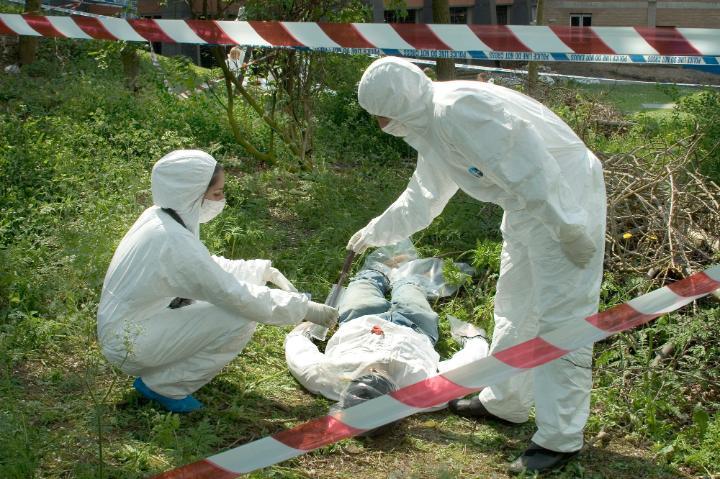
Students conduct a simulated Police Line Search on University of Bradford grounds
Forensic Examination Suite
The laboratory examination of simulated Forensic material is taught in our specialist Forensic Examination Suite. This is where students are introduced to the principles of the laboratory examination of forensic exhibits including garment searches (for trace evidence) chemical enhancement finger marks (such as superglue fuming) recovery and analysis of footwear marks, identification of hairs and fibres, chemical tests for blood and other substances. This along with the bespoke Crime Scene Facility provides and integrated learning experience for forensic science.
Oxenhope Moor Field Facility
The Oxenhope Moor Field Facility is used for research and training in forensic taphonomy as well as forensic search, excavation and recovery.
The site is at ~430metres above sea-level, 11 miles West of Bradford and consists of a rectangular fenced enclosure approximately 1500 x 1200 m situated on exposed moorland. Part of the site is also occupied by a commercially operated mobile telephone mast.
Within the enclosure is a single storey building that acts as store, with mains power.
The facility has been used for taphonomic research since 2000 with part of the site having been utilised to bury pig carcasses (human body analogues) as part of a series of studies to investigate the relationship between soft tissue decomposition and the degradation of hair, textiles and related materials. The original impetus for this work had started with the doctoral research of Andrew Wilson (funded under the Wellcome, Bio-archaeology program) although other research with both a bioarchaeological and forensic emphasis has been built around this work.
To date nine individual pig graves and nine control graves have been dug. Included in these graves are human hair, textile and metal samples. Each grave has a manual system for monitoring temperature (under pig, inside pig, on top of pig and just sub surface).
In addition to taphonomic research the site is used throughout the year as a dedicated outdoor training venue for teaching forensic search and recovery to both undergraduates and the specialised MSc in Forensic Archaeology and Crime Scene Investigation.
Forensic Taphonomy Laboratory
This facility enables us to research cadaveric decay. Understanding decay processes under a wide range of conditions is critical in the interpretation of partially and fully decomposed human remains from crime scenes. In the UK there is currently no licensed facility for taphonomic decay using human remains (unlike parts of the USA, Australia and the Netherlands) so this facility uses animal bodies that have originally been reared for human consumption. There are some advantages to animal models over donated human bodies in that the former allows for greater experimental flexibility (weight, size, age etc) as well as greater ease to produce replicated experiments. Our laboratory is capable of handling both discrete animal tissue – for instance in soil microcosms or whole animal cadavers in our large containment boxes. The latter allow for regular sampling of bodies decaying in an air space. Recent work has focused on both the development of microbial communities and the chemistry of body exudate under contrasting depositional environments.
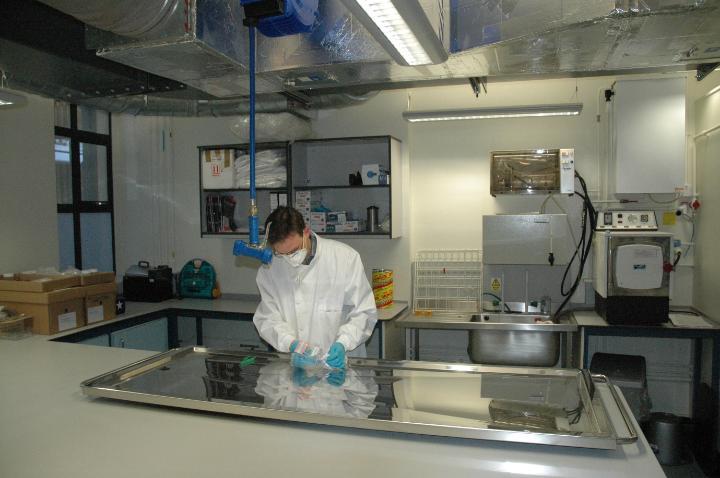
Geophysics
Bradford's geophysics is composed of teaching and research staff, research fellows and industry associates (e.g. from Geoscan Research and GSB Prospection) who share an enthusiasm for the application of geophysical and remote sensing techniques to archaeological problems.
The emphasis is to go beyond the simple application of existing techniques and develop new methodologies for data acquisition, processing and visualisation as well as designing and adapting new techniques for the special requirements in archaeological studies.
The academic lead for this area is Professor Chris Gaffney.
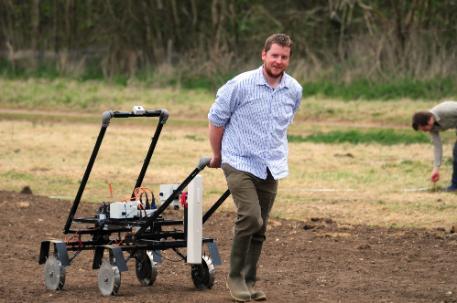
Stable isotope analysis
We specialise in the application of isotopic tools to address questions in archaeological, anthropological, environmental, palaeodietary, climate and forensic research. We have a well-equipped laboratory, capable of analysing the stable isotopes of hydrogen, carbon, nitrogen, oxygen and sulphur from most organic and inorganic materials.
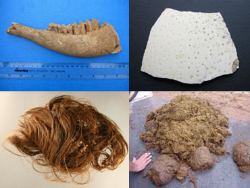
We are experienced in the preparation and analysis of bone, dentine, hair and other organic residues; tooth enamel and other bio-carbonate minerals, and inorganic carbonates; plants and sediments. Additionally we are equipped to sample and perform high-resolution analyses of incremental tissues including hair, nail, teeth, and shell and cave carbonates.
The stable light isotopes laboratories are housed in the Analytical Centre, and managed by the School of Archaeological Sciences.
Organic Residue Analysis
We do lipid analysis and the extraction and interpretation of archaeological information recovered at the molecular level. Lipids are a heterogeneous group of molecules which includes fats, oils and waxes. Lipids are soluble in common organic solvents and are more resistant to water leaching and degradation than proteins, DNA etc.
We can identify materials such as:
- resins to the level of Pinaceae = pines and firs (also frankincense, myrrh, pistacia - but unlikely in N Europe!)
- bitumen
- waxes (such as beeswax)
- fats and oils (sometimes separating animal from plant) also processed materials such as pine pitches and birch bark tar
- and of course mixtures of the above.
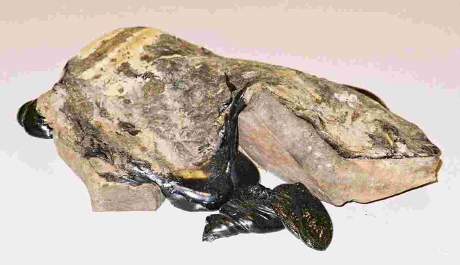
What we do
We identify samples by comparing the abundance and distribution of individual components with our experience of authentic modern samples.
One problem however is degradation, and although lipids are more resistant than other materials, the yields can be low and some samples can be so degraded that it is difficult to distinguish the exact source - e.g. plant oils are rich in oleic acid, but this degrades to give a fatty acid distribution similar to animal fats.
Characterisation of organic residues generally relies upon the principles of chemotaxonomy, where the presence of a specific compound or distribution of compounds in an unknown sample is matched with its presence in a contemporary natural substance.
The use of such molecular markers (biomarkers) is not without its problems since many compounds are widely distributed in a range of natural substances, and the composition of an ancient residue may have changed significantly during burial.
Techniques of analysis
Gas chromatography (GC)
A sensitive separation technique in which the components of a volatile sample are partitioned between two phases; a mobile gaseous phase, and a stationary liquid phase bonded onto the inside of a column. The ‘chromatogram’ shows a trace of the variation in component concentration against time and may be used to obtain qualitative and quantitative information.
Combined gas chromatography - mass spectrometry (GC-MS)
Coupling a mass spectrometer to the effluent of a GC combines the powerful analytical capability of mass spectrometry with the high degree of separation possible with GC.
At the simplest level, the mass spectrometer ionises molecules, then identifies the ions according to their mass-to-charge (m/z) ratio resulting in the generation of a mass spectrum (ion abundance against the m/z value). In many cases, mass spectra allow the individual compounds present to be detected with some certainty. GC/MS has been used widely in the identification of ancient lipid residues, resins, waxes and so on.
GC-combustion-isotope ratio mass spectrometry (GC-C-IRMS)
The recent introduction of gas chromatography-combustion-isotope ratio mass spectrometry (GC-C-IRMS) allows the ratios of abundances of stable isotopes of elements such as carbon and nitrogen to be determined for individual compounds introduced via a gas chromatograph.
Stable isotope ratios are of particular importance to studies of foodwebs due to the characteristic isotope signatures of plants utilising different photosynthetic pathways.
These distinctive ratios are passed along the food chain to herbivores and carnivores. There is evidence that there may be differences in δ13C values between ruminants and non-ruminants.
The method requires very small samples and is being applied to trace organic residues in pottery vessels to establish their origin with a high degree of precision.
Lithic Microwear and Residue Analysis
The Lithic Microwear Research Laboratory is based in the School of Archaeological and Forensic Sciences at the University of Bradford under the direction of Dr Adrian Evans.
The laboratory carries out pure and applied research and contractual work for the archaeological community. Research focuses on developing innovative approaches to enhance the power of the technique, on exploring the potential of new applications, and to analyse artefact assemblages.
Background
Lithic microwear analysis is the microscopic study of wear and fracture scars that occur on stone artefacts. Experimental studies demonstrate that microscopic wear and fracture scar characteristics resulting from tool use vary systematically according to the worked material (e.g., hide, wood, meat, bone) and to the applied forces and motions (e.g. cutting, scraping, wedging).
The development of principles regarding these relationships enables microwear analysts to infer the past use or uses of lithic artefacts with greater precision and accuracy than through reliance on either ethnographic analogues or macroscopic attribute analysis, which have proved inadequate even at identifying used pieces. It can also be applied to understanding natural formation processes.
The current method applied at our laboratory is based on a combination of microscopic techniques and, where applicable, non-destructive chemical analysis techniques.
Commercial use of facilities
We work with a number of universities, funding bodies, and other institutions worldwide to collaborate on research initiatives to improve knowledge in archaeological and forensic sciences. Examples of these include
The facilities we offer to institutions include:
- Archaeological prospection
- Human osteology
- Lithic microwear and residue analysis
- Organic residue analysis
- Stable light isotope analysis

